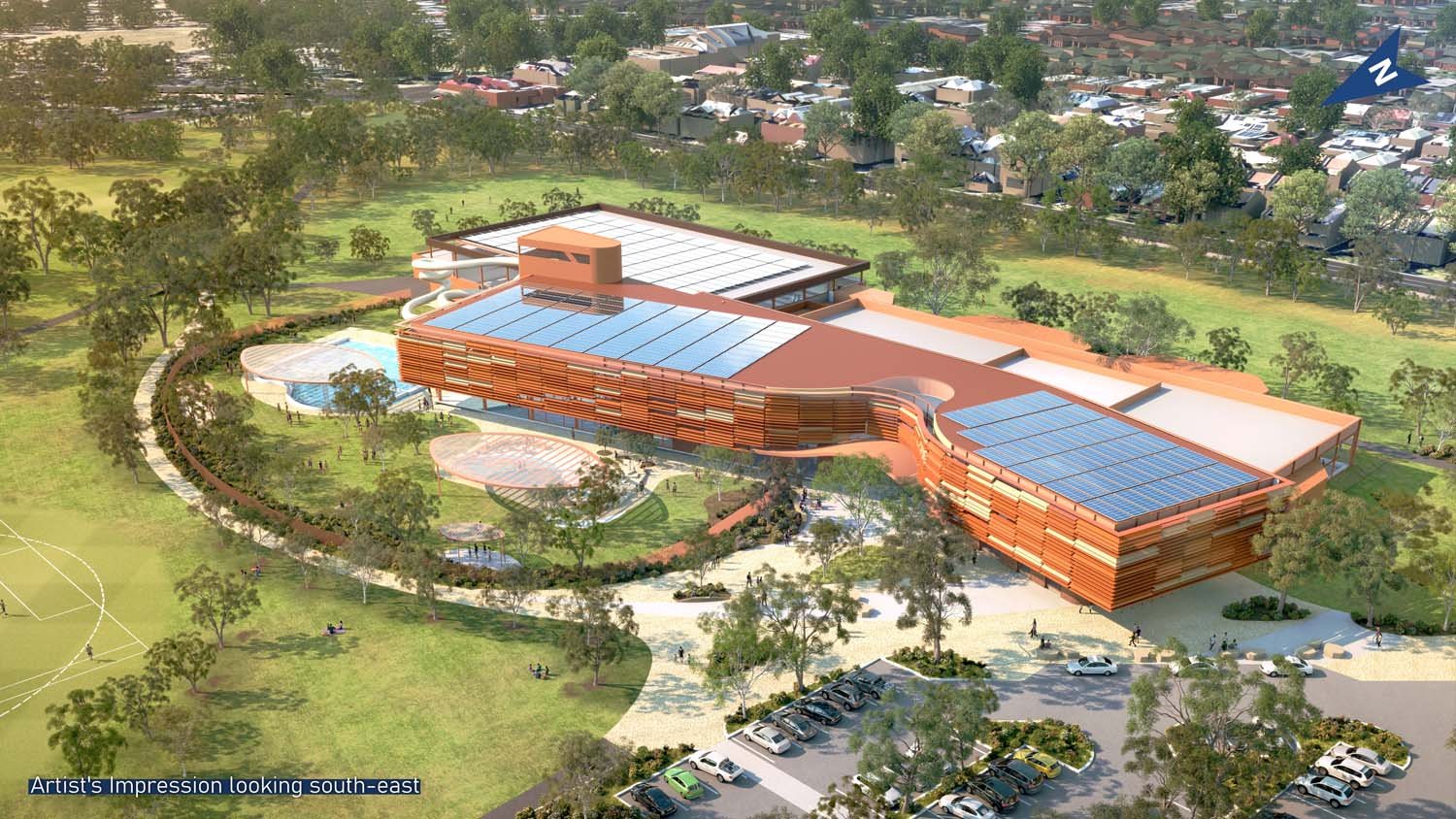by Shane Sody
If you Love Your Park Lands, like we do, you might occasionally hear criticism from people who have latched onto a Park Lands myth.
In this article, we’re MYTH-BUSTING the claim that new commercial development on your Park Lands is required to stop facilities losing money.
Premier Peter Malinauskas has repeatedly stated that the State Government has stepped in, to turn around the financial fortunes of two enterprises on your Park Lands: an aquatic centre, and a golf course.
Trees on one of the North Adelaide golf courses, in Possum Park / Pirltawardli (Park 1 of your Park Lands). These trees (and this land) doesn’t make a profit, so should they be chopped down to be replaced with something that does make a direct financial return to a commercial operator?
The Premier has been very clear that State Government investment in a new Aquatic Centre ($135 million) and foreshadowed investment in a re-developed North Adelaide Golf Course is intended to turn around the financial fortunes of both enterprises; and have them run at a profit.
That’s been characterised as a “one-dimensional” view.
What is the reason for insisting upon profits from your Park Lands?
Calculating how to turn your Parks into profit centres?
Governments exist (in part) to provide services (“public goods”) that the private sector cannot or does not provide.
Think of the many services provided by Governments, and how few of them could, or do run at a profit.
The Police service is not run at a profit; nor do hospitals, public transport, public schools, playgrounds, libraries, public art galleries, roads, footpaths, bridges, etc exist to make money for their Government-appointed operators.
Each of these services or facilities is provided by one or more level of governments, as a “public good”. Yes, your taxes indirectly pay for these services, but you are not charged every time you need them or rely upon them. “Public goods” are said to be both:
“non-rivalrous” (when you use them, you are not preventing anyone else from using them) and
“non-excludable” (it’s not possible or practical to confine their benefits to paying customers).
When you play a round of golf on a public course, or swim at a public pool, you get a personal benefit. However, the availability of these services is also of value to non-users. The Park setting of a golf course, and the benefits of improved community health from the promotion of swimming, both provide indirect benefits to the rest of the public. That’s why these services attract ratepayer or taxpayer subsidies. A swimming centre, and a golf course are both at least partly “public goods”.
That’s why neither public swimming pools nor publicly-owned golf courses typically operate to generate commercial profits. When entry fees or green fees apply, they are rarely set at a level to recover full costs, because public swimming pools and public golf courses are acknowledged as at least partly a “public good”.
The former Council-run Adelaide Aquatic Centre on Denise Norton Park / Pardipardinyilla (Park 2) was operating at a financial loss for many years. It was not in dispute that ratepayers were subsidising the operations of the former Aquatic Centre. That was an explicit City Council policy, to encourage its use, as a public service.
Likewise the three Council-run North Adelaide Golf Courses on Possum Park / Pirltawardli (Park 1) have not been run at a profit. Just like the admission fees charged at the former Aquatic Centre, user-pays green fees have covered only a fraction of the cost of maintaining the course and its Park Lands setting. Fees have been so low, because the “public good” of an Open, Green, Public Park with a dense urban forest is of potential benefit to everyone, not just golfers.
How many of the thousands of trees in Possum Park / Pirltawardli will LIV? Or how many will die? It depends on whether they are useful for making money out of golf enthusiasts.
Insisting upon commercial profits for these public benefits is a fundamental misconception about the purpose of Parks and the purposes of Government; especially when these services are located on your Open, Green, Public Park Lands.
New Aquatic Centre: more than three hectares will be behind a fence; preventing Park access to any non-paying visitors. This part of your Park Lands will be no longer “Open, Green, Public”. It will be effectively privatised and commercialised, including with shops, offices, gym, and consulting rooms; run for profit by leaseholders. Government image: https://dit.sa.gov.au/infrastructure/adelaide_aquatic_centre
Parks for profit?
In theory, it would be possible to put fences around all of your Adelaide Park Lands and charge you to enter any Park. But no-one is suggesting that is feasible nor desirable.
Ever since the establishment of your Adelaide Park Lands in 1837, they (and all the other public parks that came later) have been considered to be a “public good”, just like the provision of roads, hospitals etc. It would be a nonsense to expect “public goods” to run at a profit.
It is a mark of a civilised society that services such as police, hospitals, roads, and public parks are funded by general public revenue for the benefit of all; not commercialised to operate at a profit.
See the other Park Lands Myth Busters https://www.adelaide-parklands.asn.au/myth-busters








